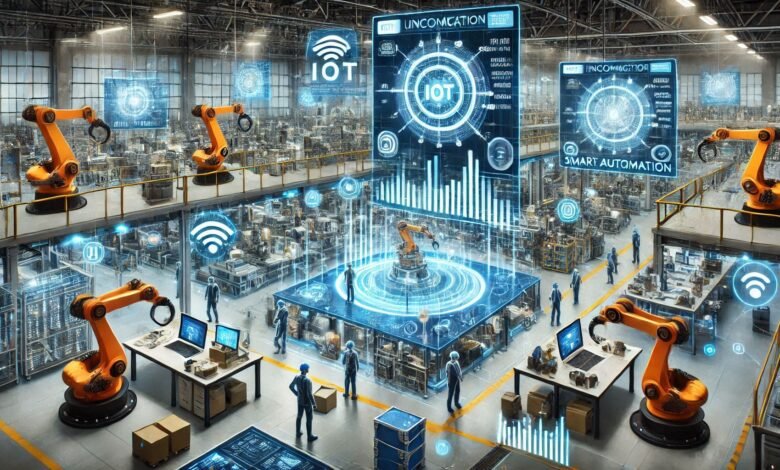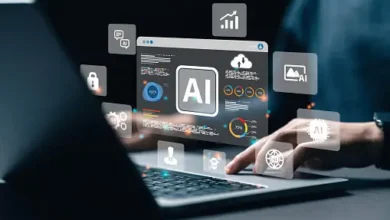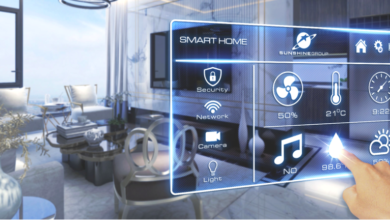The Future of IoT in Industrial Automation: Challenges and Opportunities
In this detailed article, we explore how IoT is transforming industrial automation, the opportunities it unlocks, and the hurdles it must overcome.

The Industrial Internet of Things (IIoT) is reshaping how industries operate, driving efficiency, innovation, and connectivity in unprecedented ways. By combining smart devices, sensors, and interconnected systems, IoT plays a central role in the evolution of industrial automation. However, as promising as this future looks, IoT implementation in the industrial sector comes with unique challenges that industries must address to realize its full potential.
In this detailed article, we explore how IoT is transforming industrial automation, the opportunities it unlocks, and the hurdles it must overcome. From predictive maintenance to cybersecurity risks, we delve into the factors that define the future of IoT in industrial automation.
Understanding IoT in Industrial Automation
The Internet of Things (IoT) is a network of interconnected devices capable of collecting, analyzing, and sharing data in real time. In industrial automation, IoT fosters smart ecosystems where machines, processes, and humans work seamlessly together.
Key Concepts of IoT in Industrial Automation
- Data-Driven Decision Making:
IoT enables industries to collect large volumes of data from sensors and connected devices. This data is analyzed to provide actionable insights, allowing industries to make informed decisions. - Self-Regulating Systems:
With IoT, machines and systems can autonomously adjust operations based on real-time data, reducing the need for human intervention. - Integration with Industry 4.0:
IoT is at the heart of the fourth industrial revolution, enabling smart factories that integrate technologies like robotics, AI, and machine learning.
The Current Landscape of IoT in Industrial Automation
IoT is no longer a distant concept—it is actively transforming industries across the globe. From manufacturing to logistics, its applications are vast and varied.
Adoption Trends
- The industrial sector accounts for a significant share of IoT adoption, with manufacturing, oil and gas, and transportation leading the way.
- AI-powered IoT solutions and edge computing are emerging trends that enhance the efficiency of industrial operations.
Technologies Driving IoT Growth
- Artificial Intelligence (AI): AI complements IoT by enabling advanced analytics, anomaly detection, and automation.
- Edge Computing: Processing data closer to the source reduces latency and improves real-time decision-making.
- Blockchain: enhances security and transparency in IoT transactions.
Example: Tesla’s factories leverage IoT and AI for real-time monitoring and optimization of production lines, ensuring high efficiency and minimal downtime.
Opportunities Presented by IoT in Industrial Automation
IoT has unleashed a plethora of opportunities for industries, offering inventive solutions to long-standing issues. Here’s how IoT is revolutionizing industrial automation:
1. Boosted Operational Efficiency
IoT minimizes inefficiencies by automating workflows, reducing waste, and optimizing resource utilization.
- Example: Smart factories use IoT sensors to monitor machine performance and adjust operations to maintain peak efficiency.
2. Predictive Maintenance
One of the standout features of IoT is its ability to foresee equipment failures before they occur, saving industries significant time and money.
- Statistical Insight: Predictive maintenance powered by IoT can reduce unplanned equipment downtime by up to 50%.
- Real-World Example: Rolls-Royce uses IoT sensors in aircraft engines to predict maintenance needs, enhancing reliability and reducing costs.
3. Enhanced Safety Standards
IoT devices monitor hazardous environments in real-time, ensuring worker safety.
- Example: IoT-enabled wearables alert workers to high-risk conditions in chemical plants.
4. Real-Time Analytics and Monitoring
IoT systems provide continuous data streams, helping industries react quickly to anomalies.
- Example: A logistics firm uses IoT tracking to monitor vehicle routes, reducing fuel consumption by 15%.
5. Scalability and Customization
IoT solutions are adaptable, allowing businesses to scale operations or customize systems according to specific requirements.
Challenges Facing IoT in Industrial Automation
While IoT presents numerous advantages, its implementation in industrial automation is not without challenges. Understanding and addressing these challenges is crucial for businesses to maximize the benefits of IoT.
1. Cybersecurity Threats
With an increased number of connected devices, IoT systems are prone to cyberattacks such as data breaches and ransomware.
- Example: A major food processing company faced a cyberattack that disrupted its IoT-enabled supply chain for several weeks.
- Solution: Implement end-to-end encryption, multi-factor authentication, and regular security audits.
2. Lack of Interoperability
IoT devices from different vendors often lack compatibility, leading to fragmented systems.
- Proposed Action: Adoption of universal standards like OPC Unified Architecture (OPC UA) can promote interoperability.
3. High Initial Costs
The investment in IoT devices, infrastructure, and workforce training can be daunting, particularly for small and medium-sized enterprises (SMEs).
- Solution: Governments and industry associations could offer subsidies and grants to ease the financial burden.
4. Data Management and Privacy
Handling the vast amount of data generated by IoT systems can be challenging, especially with strict data protection regulations like GDPR.
- Solution: Employ robust data management systems and ensure compliance with legal frameworks.
5. Talent Shortages
The demand for professionals skilled in IoT technologies, data analytics, and cybersecurity far exceeds the supply.
- Proposed Solution: Companies should invest in training programs and partnerships with educational institutions to bridge the talent gap.
Emerging Trends Shaping the Future of IoT in Industrial Automation
As technology evolves, new trends are shaping the trajectory of IoT in industrial automation.
1. Integration of AI and Machine Learning
- AI enables IoT systems to perform advanced analytics, automate decision-making, and detect anomalies.
- Example: Smart factories use AI-enhanced IoT to predict equipment malfunctions and suggest corrective actions.
2. Edge Computing and 5G
- Edge computing processes data locally, reducing latency. Combined with 5G, it ensures seamless and ultra-fast connectivity.
- Example: Autonomous vehicles in industrial settings use 5G and edge computing for navigation and task execution.
3. Digital Twins
- Virtual replicas of physical systems enable industries to test and optimize processes in a risk-free virtual environment.
- Case Study: General Electric uses digital twins to optimize power plant operations, achieving significant cost savings.
4. Focus on Sustainability
IoT solutions are helping industries reduce their environmental impact by optimizing energy use and minimizing waste.
- Example: IoT-enabled smart grids dynamically adjust electricity distribution to reduce energy wastage.
Case Studies: Success Stories of IoT in Action
Bosch
Implemented IoT-driven predictive maintenance in its factories, achieving a 20% increase in operational uptime.
Caterpillar
Utilized IoT to monitor fuel efficiency and equipment health, saving millions annually.
Siemens
Enhanced supply chain visibility through IoT analytics, reducing delays and improving customer satisfaction.
How to Prepare for the Future of IoT in Industrial Automation
1. Develop a Clear IoT Strategy
Identify key areas where IoT can add value and align them with business goals.
2. Prioritize Security
Invest in comprehensive security measures to protect IoT systems from cyber threats.
3. Partner with Experts
Collaborate with experienced IoT solution providers for smooth implementation and maintenance.
4. Train Employees
Upskill your workforce to ensure they can effectively manage and leverage IoT systems.
Conclusion
IoT in industrial automation offers transformative potential, driving efficiency, safety, and sustainability. While challenges such as cybersecurity risks and high costs remain, addressing these issues with innovative solutions will pave the way for broader IoT adoption.
The integration of AI, edge computing, and digital twins will further amplify IoT’s capabilities, ensuring its critical role in shaping the future of industries. Now is the time for businesses to embrace IoT, investing in strategies that will keep them competitive in an increasingly automated world.
FAQs
- What industries benefit most from IoT in automation?
Manufacturing, logistics, oil and gas, and energy sectors are major beneficiaries. - How does IoT improve predictive maintenance?
IoT sensors monitor equipment in real-time, identifying potential issues before failures occur. - What are the main risks of IoT in industrial automation?
Cybersecurity threats, high implementation costs, and interoperability issues. - How can companies ensure IoT security?
By implementing strong encryption, multi-factor authentication, and regular security updates. - What is the role of 5G in IoT?
5G ensures faster, more reliable connectivity, essential for real-time IoT applications.











